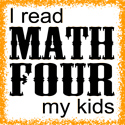
The topic came up this past week in my homeschool co-op about which grammar curriculum everyone used. These types of conversations happen every time you get a group of homeschool moms together. Everyone likes to share their experience and ask questions. It is neat to see how other families tackle different topics - especially if you have had a chance to be around their kids and see that they are proficient in an area. We all want to know each-other's "trade secrets". This kind of discussion is particularly heavy around "book fair season". Most homeschool moms are making purchases for next year's curriculum from around May through August!
I thought I would let you be a fly on the wall to hear the conversations that I have had about Grammar with other homeschool moms over the years. If you are wondering what I do for Grammar - or what other moms I know are using, read below:
Question: I need direction on a good grammar curriculum. Can you tell me what you use?
My friends' answers:
We use Easy Grammar (mostly because if it ever becomes necessary, they will be able to diagram a sentence with no problem). It's easy to do and they are very proficient when it comes to grammar skills. Correct everything they write with them watching, explaining how a sentence can be formed better or more correctly.
We also love Easy Grammar! I highly recommend the daily grams with it.
Easy Grammar is the way to go!! It’s easy!! I have used the 2nd-5th grade levels.
I used Mad Libs with my daughter and it was a fun way to learn grammar. This is basic stuff though..not something you would base a curriculum on. But it reinforces the parts of grammar you are teaching like nouns, verbs, adjectives, etc.
Here is what I have used or seen:
English for the Thoughtful Child - this is not grade specific. It has about one lesson per day, although we sometimes took longer to do one. It is a gentle approach to grammar, punctuation, and writing. It has copy work, memorization, basic grammar, picture lessons, and more. It is not a workbook type curriculum. We used it for second grade, but you could easily use this with multiple ages. There is just one book, the student book. It is non consumable. It is secular.
Learning Language Arts Through Literature - this comes with a student activity book (consumable, under $30) and separate teachers guide (non consumable, also under $30). There is a new book for each grade. First and second grade teach reading. From 3rd grade on, each lesson lasts about a week, the lesson starts with copy work and then covers spelling, grammar, usage, mechanics, and some reading comprehension and writing. The third grade level introduces analogies. There are 4 book studies per year. It is a Christian curriculum.
Spectrum Language Arts It is a consumable workbook (under 10$) - This seems to be a very complete (secular) grammar, usage, and mechanics curriculum. It covers one lesson per day, with the description of the skill or rule, practice, and then practical use of the skill. It has review tests. There is no reading or spelling instruction.
These last two are grade specific. However, what I have seen is that grammar is very repetitive over the the first four years of elementary school. It should be easy to adapt any program to multiple ages, depending on how close they are.
My 6-year old daughter is using English for the Thoughtful Child from Greenleaf Press. It is supposedly a more 'natural' approach to learning language. Exercises include copy work, memorization, narration, and descriptive writing. Basics of punctuation, capitalization, and using complete sentences are all covered. The language is someone archaic, which for some may be a turn-off, but for some may be a point of attraction. Each lesson is written directly to the student (if you read the lesson aloud, it will sound conversational to your child). Explanations and directions are clear and concise. There is no teacher guide, but none is needed. The workbook is consumable, but you can instruct your child to write on separate paper (as I do) and use it for several children. It is intended to cover 1st and 2nd grade, though some children will move through the book in more or less than 2 years. You could use this one book to teach several children simultaneously ranging in age from 5-8.
This year my 8 year old is using Rod & Staff English 3. The first thing is that the program is definitely religious. The publishers are Mennonite. The books use passages from scripture, other passages & sentences describe rustic farm life and reflect traditional Mennonite family structure. The illustrations (bw line drawings only) are of Mennonite families (think organdy head coverings, dresses on females, long sleeves & pants on males). We are Christian, but are very very far removed from Mennonite doctrine, but find nothing objectionable in the English books so far. (We actually find the books less dogmatic about 'doing good' than ABeka was). Now, if you are also okay with this then let me tell you about the program...
The lessons are well organized, covering one topic thoroughly before moving on. The explanations are incredibly clear and easy to understand, so even mom won't be confused. Diagramming is taught beginning in the 3rd grade book. You can order a free Scope and Sequence for all subjects, and a free Curriculum Sample for each grade level from the company.
The student text is non-consumable, and comes in a sturdy hard cover binding that will last through several children and still retain some resale value. There is a very inexpensive consumable workbook some may like to use to supplement the lessons with more drill, but they are not necessary. There is a teacher's manual, which you will not need in the lower grades if you have at least some skill in grammar (the explanations are *that* clear). All the materials are simple and inexpensive. You will not find glossy full-color anything in their books, and for easily distracted children (such as my dd) this is a very good thing. We have been very pleased with dd's progress, ease in understanding, and retention of information.
First, I went through and dictated all the passages that Ruth Beechick has in her books, "A Strong Start in Language" and "You Can Teach Your Child". This took a few months, but gave me the idea of what I was doing. Now, I find passages in books we're reading, or reference books from the library about our topic, and use them to teach certain aspects of grammar or writing. I use an age-appropriate or grade-level checklist to see what grammar and writing skills are expected at my kids ages (there's one in the Konos Compass).
For younger grade levels, I dictate one passage per day. (Either a sentence or two or a short paragraph) The next day, we look at any mistakes and talk about why they need to be a certain way. They practice writing it correctly or maybe write something similar. Spelling words get reviewed. (At lower grades I ignore the tougher sounds and just work on sounds they should be able to handle) If you're picking dictation from books, you can't always guarantee there won't be sounds they don't know yet. We run into spelling rules, homonyms, proper nouns, contractions, all kinds of things to teach.
The next day we dictate the same passage and try not to make the same mistakes. Depending on how many mistakes there were, we do it again, or put that one away and do another passage the next day.
You can teach different types of writing this way and then practice your own writing. For example, there is a great descriptive passage from Black Beauty in one of Beechick's books. After finishing the dictation work, you could assign a descriptive piece on your current Konos topic. How to write explanatory, descriptive, narrative pieces can all be practiced this way, as well as working on the technical parts, like grammar and punctuation.
KONOS has some great LA info in the Compass, and in their KONOS in a Box kits. I would encourage you to purchase some of Ruth Beechik's books, 3 Rs for grade 3 and under, You Can Teach Your Child Successfully for grades 4 and up. Cindy Rushton also has a lot of encouraging information from a Christian viewpoint. Cindy refers often to Ruth Beechik. You can get tapes to listen to from Cindy's website, which is a good thing to do while you are driving around on errands. I use both authors.
We are doing Daily grams, Easy Grammar and Spelling Power for Language. We also are using Writing Strands about every other week, just depending on the amount of writing I want to do with our current unit study.
My radical thought.....
What about not using workbooks?
We have spent the last 2 years finding out that we love to learn language and grammar from literature and dictation and discussion. We have actually had fun and my kids ability to express themselves creatively has blossomed considerably since we started using a whole language approach rather than workbooks.
I just wanted to say that for our family, the language arts within Konos is really quite good!
As homeschoolers our priorities are different than the public school's. We can choose what is really important and most beneficial for our children. My daughter was rushed through so many books, poems and stories in public school, we were overwhelmed by the quantity and were robbed of the quality. I appreciate the slower pace of Konos because we are able to savor the story line, observe the character's development and explore the setting. The stories become memorable that way. A classic becomes a classic because we establish something a kin to a relationship with the characters- and relationships take time.Have you ever felt sad at the story's end because you will miss the characters?
The sentence to paragraph to paper sequence of the Konos style of writing provides applicable and adequate spelling, (without those endless, tedious spelling word lists), encourages critical thinking, rules of grammar, sentence structure, and more. Let's be careful that in our endeavor to provide our children challenging lessons, we don't over do it.
I believe that when you begin to Homeschool with KONOS, the Language Arts included within the Unit studies are sufficient. Some people may disagree with me. We each have to find our own way as to what works best with our own families. I have found that the suggested writing activities in each unit give my daughter the opportunity to write with a purpose, so that each paragraph paper, poem or report is meaningful and worthwhile to her. While she is writing, I have found that I am teaching Language Arts in a relevant manner. Rather than separating spelling, sentence structure, tenses, punctuation, contractions parts of speech grammar etc. into a 'subject" in and of itself, with endless workbook pages, spelling lists and drills, she is learning all this as part of the process. Her retention is high because she has internalized all these rules and they have become skills!
Whenever I go for a bike ride, I don't review the list of skills for proper cycling. I just hop on my bike and start to pedal off, with purpose and joy! That's how I want my child to learn Language Arts! Using the language in the Konos units and Compass does that for us!
We've used Winston Grammar. It is great, but I would caution you about using it with a child that is not reading fluently. If reading fluency is not present, it's not time to start studying grammar. It really would not hurt a child to wait to study grammar. Of course, you would still have them working with language (writing reports/stories, learning vocabulary, learning literature terms, that sort of thing), but you don't have to formally study grammar right away. The need to know grammar is to be able to communcate correctly and well. Some children are ready to learn that early, but most need lots of practice actually using the language before any of the grammar rules make sense. (I've heard someone say he didn't understand grammar until he studied a foreign language as an adult, even though he had years of 'grammar instruction'.)
Winston Grammar is one of the best, in my opinion. It is as concrete as you can get in studying an abstract concept like grammar. There are cards for each of the parts of sentences. Each card has hints on it on how to remember information about that part of speech. It also shows how to mark that part of speech on the worksheets. The student uses the cards like manipulative, laying them down in the order of the words in the sentences on the worksheet. If you haven't studied a part of speech, there are black cards that are laid down in that space. After the student 'puts the sentence together' with the cards, they then mark the sentences on the worksheets. I think this is a wonderful curriculum, making it possible to learn a difficult subject with hands-on learning, which is almost always best.
Another thing I like about it is that is is a complete program (there is a beginning and and end and it doesn't drag on and on for years) studying something that should be able to be learned in a few months. Grammar is the nuts and bolts of language. It is useful to know it, but the purpose of learning it is to able to 'build' good communication, not identify 'nuts' and 'bolts'.
I use the complete copies of Scott Foresman's Grammar and writing Handbook for grades 1-6! Each handbook has over 100 pages. They are in PDF format and can be printed from home as you need them. They look great as supplements and can possibly be used independently.
Higher Up and Further In wrote an interesting article about Charlotte Mason and grammar. I think I fall in to the Charlotte Mason camp with this subject. It is strange, but the worksheets really turned me off in those early years when I was new to homeschooling. Here's what we do for grammar now in the Sprittibee household:
We used A Beka Penmanship for cursive, handwriting and Christian character-based copy-work. We also use Scott Foresman online Language, Grammar and Writing Textbooks. They are free and dowloadable pdf files that you can print. I love them. We also rarely use the Draw, Write Now! curriculum for handwriting while teaching simple drawing skills. If your kids haven't seen School House Rock's Grammar Rock videos, I would HIGHLY suggest those, too - they are a worthy edition to your home video collection!
Ruth Beechick suggests not using grammar until your kids are out of elementary school. Many education specialists within the homeschooling movement say to focus on whole books and reading instead - using narration, copy work, etc. to reinforce the learning of grammar naturally (and spelling/vocabulary). That is mainly what we do. I find that we have done well with minimal grammar instruction up until this point. The kids have never taken spelling, either - and they seem to do fine due to our prolific reading. I require some sort of writing and reading every day, but it is rarely in worksheet form. I think that READING A LOT is the best way to learn language, grammar, vocabulary, etc. Reading is the key to success with school.
Other writers who support this style of language development are Charlotte Mason, Robin Sampson of Heart of Wisdom, and Clay and Sally Clarkson of Educating the WholeHearted Child. We fall in to more of the eclectic mode, though - because we do some Grammar worksheets when we feel like it!
Quick Links:
My BIG-Fat Homeschool Links List
Homeschool Tips from Sprittibee
Agreeable Grammar Article
Making Vocabulary Fun
Subscribe to Sprittibee by Email
Buzz Words: advice, writing, reading, grammar, curriculum, homeschool, links, teaching, learning, language















































4 comments:
Here's another one that I believe follows the Charlotte Mason method. It's Analytical Grammar. (www.analyticalgrammar.com) It's actually recommended by the people at simplycharlottemason.com. We're doing Junior Analytical Grammar next year. It's a 10 week long course, but we'll spread it out over the whole year in order to have shorter lessons.
Thank you for all these tips Heather. With our year coming to and end and another one coming up I don't want to buy curriculum that we won't use.
Ahhh We use Easy Grammar. I actually used A Beka for most of my grammar, but the last 3 years of high school I used Easy Grammar. Jocelyn and I whizzed through those books. They were so easy to learn! I mean, I had already learned just about everything, so it was like a refresher course. But Easy Grammar was really easy! :D
Only a couple more weeks... YAY!
Love ya!
Amanda
http://superangelsblog.com
We're going to see School House Rock at the Magik Theater in San Antonio in a few weeks. It's playing now, and if you get 11 or more kids/ adults you each pay less than $5 to see it. There's a also a great park right behind the theater for a great picnic and playtime afterwards! You should check it out!
Homeschoolmama
Post a Comment